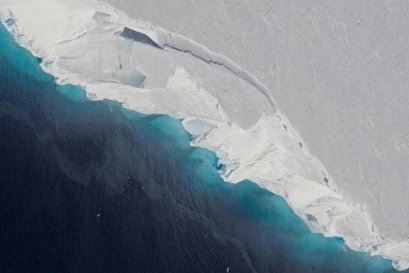TEHRAN, Jul 10 - Even if global warming slows or stops in the coming decades, instability among Antarctic glaciers could trigger rapid melting and subsequent sea level rise.
 TEHRAN, Young Journalists Club (YJC) -Fluctuations in climate and a lack of data make modeling the future of the Antarctic ice shelf especially difficult. But new analysis of the instability embedded in the continent's glaciers suggests large portions of the ice shelf are likely to reach a tipping point, guaranteeing significant levels of melting and sea level rise.
TEHRAN, Young Journalists Club (YJC) -Fluctuations in climate and a lack of data make modeling the future of the Antarctic ice shelf especially difficult. But new analysis of the instability embedded in the continent's glaciers suggests large portions of the ice shelf are likely to reach a tipping point, guaranteeing significant levels of melting and sea level rise.
"If you trigger this instability, you don't need to continue to force the ice sheet by cranking up temperatures. It will keep going by itself, and that's the worry," lead researcher Alex Robel, an assistant professor in Georgia Tech's School of Earth and Atmospheric Sciences, said in a news release. "Climate variations will still be important after that tipping point because they will determine how fast the ice will move."
Robel and his research partners at Georgia Tech, NASA's Jet Propulsion Laboratory and the University of Washington built an instability model of Thwaites Glacier and ran hundreds of simulations. The results of each simulation differed significantly, as expected, but all showed the latent instability of Thwaites guarantees sizable levels of ice loss under a wide range of climate scenarios.
"After reaching the tipping point, Thwaites Glacier could lose all of its ice in a period of 150 years," said NASA JPL scientist Helene Seroussi. "That would make for a sea level rise of about half a meter, or 1.64 feet."
Instability in Antarctic glaciers is found around the grounding line, where the bedrock underneath the glacier meets the ocean. Warm water can penetrate deep beneath the glacier, accelerating melting. As more and more ice flows out, and as more icebergs calve, more and more of the glacier is exposed to the ocean. This feedback loop causes glacial instability.
In climate models, Antarctic ice offers a stabilizing presence, calming dramatic climate fluctuations. Temperatures may vary wildly, but melt rates only experience subtle changes. But when scientists accounted for glacial instability, they found the ice had the opposite impact.
"The system didn't damp out the fluctuations, it actually amplified them. It increased the chances of rapid ice loss," Robel said.
Robel and his colleagues this week published the results of their simulations in the journal Proceedings of the National Academy of Sciences.
The timing of when glacial instability might kick-in varied widely. It could be triggered in 200 to 600 years.
Source: upi
 TEHRAN,
TEHRAN,